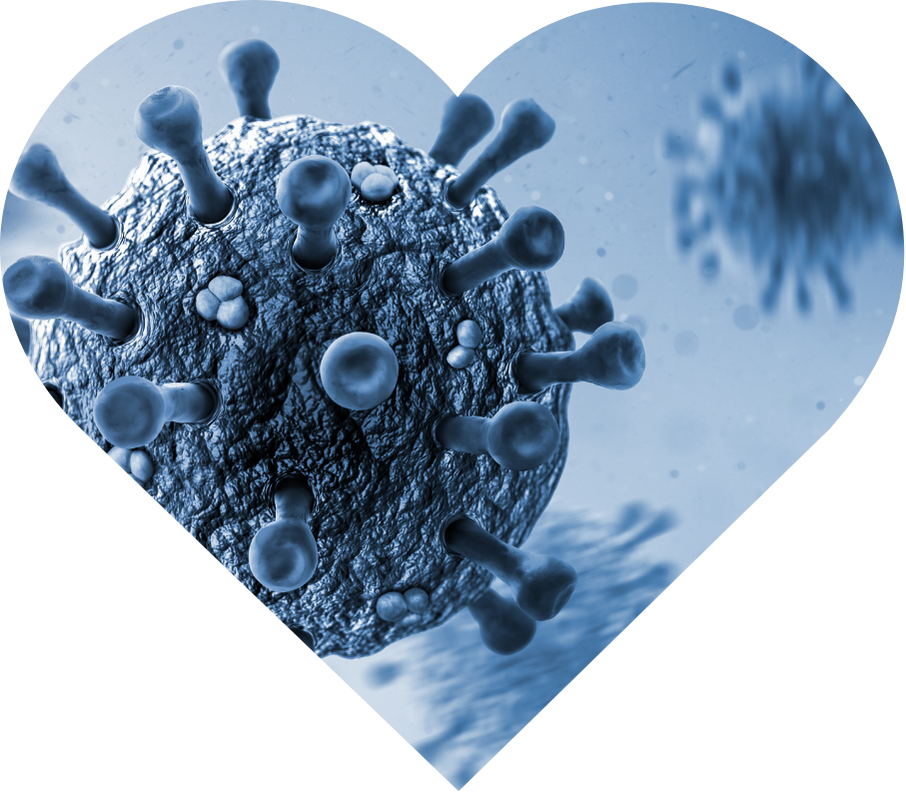Imagine a school of the future where wearables report mini-signals of the immune system in real-time: elevated body temperature, minimal heart rate variability, initial inflammation markers. Children remain asymptomatic at home, infection chains break, and productivity and joy of learning increase. Until we reach that point, your behavior will determine this future – especially in the first 24–48 hours of an infection. Those who recognize the warning signs and act wisely not only protect themselves but also the next generation.
Cold and flu are both acute respiratory infectionssudden-onset infections of the respiratory tract, but with different dynamics. The cold (usually caused by rhinoviruses) often starts insidiously: scratchy throat, stuffy nose, and mild fatigue. The flu (influenza) typically hits abruptly: high fever, chills, pronounced myalgiasmuscle pain, and deep exhaustion. Warning signs that demand immediate action include rapidly rising fever over 39 °C, shortness of breath, persistent chest pain, confusion, blue lips, persistent vomiting, or significant deterioration after a brief improvement. For infants, pregnant women, the elderly, people with comorbiditiescoexisting conditions, and athletes in intensive training phases, it's better to seek medical attention early. It is important to understand the routes of infection: droplets, aerosols, and fomitescontaminated surfaces. Here, your daily habits – hand hygiene, sleep, distance, and stress management – determine whether contact leads to illness.
For high performers, the cost of overlooked flu is high: days with cognitive fog, reduced performance in training, increased risk of injury due to impaired reaction time, and, in the worst case, complications such as pneumonia. Short sleep and sleep debt lower immune resilience and significantly increase the risk of throat infections, flu-like illnesses, and even bronchitis/pneumonia [1]. Conversely, sufficient sleep not only supports infection defense but also improves vaccine response – a lever for prevention during the season [2]. Poor hand hygiene accelerates the spread in teams, schools, and offices; consistent handwashing, on the other hand, measurably reduces hospitalization cases of influenza [3]. Distancing measures – wisely and early combined – reduce transmission rates and flatten waves of infection, especially during peak phases, even though they may bring psychosocial side effects [4]. Critically: smoking exacerbates respiratory infections. Active smokers have about double the rates of severe infections, including influenza, in large cohorts, with more hospitalizations and complications [5]; experimental data show thrombo-inflammatory mechanisms that can block pulmonary vessels [6]. Finally, overdosing on over-the-counter combination products is a silent risk – during the cold season, the likelihood of exceeding the safe daily dose of paracetamol often goes unnoticed with multiple products [7].
Three insights stand out. First: hand hygiene is not only plausible but causally relevant. A multicenter case-control study in 36 hospitals showed that frequent handwashing – five to ten times a day and more – was associated with significantly fewer influenza-related hospitalizations; the effect was dose-dependent, with washing after contact with potentially contaminated surfaces being particularly effective [3]. Theoretical modeling complements the picture: the longer viruses survive on hands, the greater the benefit; washing immediately after contamination outperforms fixed intervals [8]. Second: sleep is an immunological multiplier. Reviews link short sleep to increased susceptibility to infections and show that sufficient duration and circadian timing enhance the antibody response to vaccinations – practically, this means at least seven hours, consistently in rhythm [2]. Population data from primary care confirm the relevance to everyday life: short sleep, sleep debt, and insomnia correlate broadly with infections ranging from cold to pneumonia [1]. Third: behavior can modulate immune networks. After an intensive meditation retreat, hundreds of immune-associated genes – including interferon signals – were upregulated in blood samples, without a simultaneous increase in classical inflammatory markers. This suggests strengthened antiviral readiness, potentially useful in infections and periods of excessive inflammation [9]. When read together, these studies deliver a clear message: precise everyday measures measurably alter risk, progression, and system response.
- Hand hygiene with timing: Wash your hands immediately after potential contamination (doorknobs, public transport, handshakes) with water and soap for 20–30 seconds. If washing opportunities are lacking, use alcohol-based sanitizers; even better is a combination depending on the situation. Increase the frequency consciously during peak phases, as viruses survive for different lengths of time depending on the matrix [8] [3].
- Sleep as an immune upgrade: Plan for 7–9 hours of sleep, set a consistent bedtime, and avoid large sleep debts throughout the week. In vaccination weeks, prioritize sleep quality and a stable daily rhythm to optimize the antibody response [2] [1].
- Intelligent distancing: Avoid close contact with visibly ill individuals, especially in the first 3–5 days of their symptoms. In high-incidence phases, shift meetings to video calls, ventilate rooms consistently, and reduce crowded indoor events. Combined measures are more effective than single steps [4].
- Meditation for antiviral readiness: Integrate 10–15 minutes of breathing or mindfulness meditation daily. The goal is not esotericism, but the modulation of stress pathways and a more favorable immune signature, as gene-based analyses after intensive practice show [9].
- Use medications safely: Always check the active ingredients in cold/flu preparations to avoid double doses of paracetamol. Do not exceed 4 g/day, and do not mix combination products without oversight. When in doubt, seek advice – especially in the cold season, the risk of overdose increases [7].
- Smoke break as therapy: When infection begins, impose a strict smoking cessation and seize the opportunity for a permanent exit. This reduces the risk of severe cases and improves lung physiology for training and daily life [5] [6].
Those who take early signals seriously gain health days, cognitive sharpness, and training quality. Start today: prioritize sleep, wash hands consciously, reduce contacts when sick – and check your home pharmacy for double doses. These are small steps with a large leverage effect.
This health article was created with AI support and is intended to help people access current scientific health knowledge. It contributes to the democratization of science – however, it does not replace professional medical advice and may present individual details in a simplified or slightly inaccurate manner due to AI-generated content. HEARTPORT and its affiliates assume no liability for the accuracy, completeness, or applicability of the information provided.













